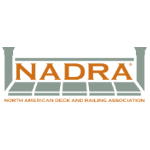
What is “visual commerce?”
Over the past few years, the notion of “visual commerce” has been defined and redefined. Visual commerce has been used to describe several different types of content, experiences and engagement but the definition has been inconsistent and fluid. At 3D Cloud, we have a product called 3D Cloud® Virtual Reality Showroom and 3D Room Designer built around our definition of visual commerce, which is a departure from some of the other uses of the phrase. Here are the four most popular definitions for visual commerce.
1. The visual commerce of Pinterest
Early on, visual commerce was used to describe image-based shopping and search. In 2012, Andrea Fishman used the phrase to describe marketing activities designed to harness the potential of Pinterest, the visual social sharing service. Fishman was interested in the notion of Pinterest as a consumer visual communications platform where brands could connect with the 2MM+ and actively growing user base.
“The phases are simple: content, cross-promotion, and engagement. Content on your page should be organized into themed, attractive boards. Board and photo names and descriptions should be customized so they are easily searchable,” writes Fishman in Pinning your hopes on visual commerce: The Pinterest potential.
The Quora definition for visual commerce aligns with this, noting that, “Visual commerce commonly refers to social commerce with an emphasis on photos and videos, most notably the use of Instagram and Pinterest with ecommerce.” The irony in this particular definition of visual commerce is that no money changes hands, meaning that no commerce actually occurs.
2. Emerging visual merchandising strategies
More recently, visual commerce has been used to discuss innovative approaches to visual merchandising by companies such as Amazon.com, L’Oreal and Sports Authority. In his article,”Do you know the new rules of visual commerce?,” author Russ Somers uses the phrase to describe the use of innovative visuals and video experiences to drive in-store purchases.
“Visuals are no longer “eye candy” or illustrations to supplement text. Instead, interactive visual elements take the lead in storytelling,” Somers writes. “The Web then becomes a delivery engine for experiences, rather than just content or technology.” His emphasis is on the ability of new web technologies to provide immersive visual experiences.
3. User generated content curation and analytics
“Internet search provider Yahoo estimated that in 2014, about 880 billion photographs will be taken,” according to Business Insider. “That’s 123 photos for every man, woman and child on Earth.”
Companies such as OfferPop and Olapic are using visual commerce to describe hashtag tracking and image sharing analytics tools that help brands to collect and curate all of these user generated photos. They specialize in tracking and visual content on platforms such as Facebook, Pinterest and Instagram. Both companies help marketers find and organize user photos that can be repurposed in brand marketing activities along with audience insights. According to the Olapic website, 65 percent of humans are visual learners. Both OfferPop and Olapic sell the ability to harness that content, measure it and make it work for marketers.
4. Visual commerce and 3D Virtual Reality
3D Cloud uses visual commerce to describe a seamless 3D Virtual Reality shopping experience, largely used by manufacturers and retailers to help customers visualize and configure high-consideration products such as building materials, automobiles and mattresses. Augmented Reality and 3D Virtual Reality adds an entirely new dimension to commerce that goes far beyond what photos can offer. 3D Cloud’s 3D Cloud makes it possible to envision a finished product at scale, even in a Virtual Reality environment when used in conjunction with a Samsung GearVR heads-up display.
Learn more about 3D Cloud Virtual Reality Showroom and 3D Room Designer
3D Cloud™ is a SaaS that makes entire 3D product inventories accessible and configurable within real-world environments for the ultimate product visualization experience. Using Augmented Reality or Virtual Reality views and advanced content management, 3D Cloud™ is a powerful sales tool designed to empower shoppers with design tools and assist high-consideration purchasing. Learn more about 3D Cloud.










